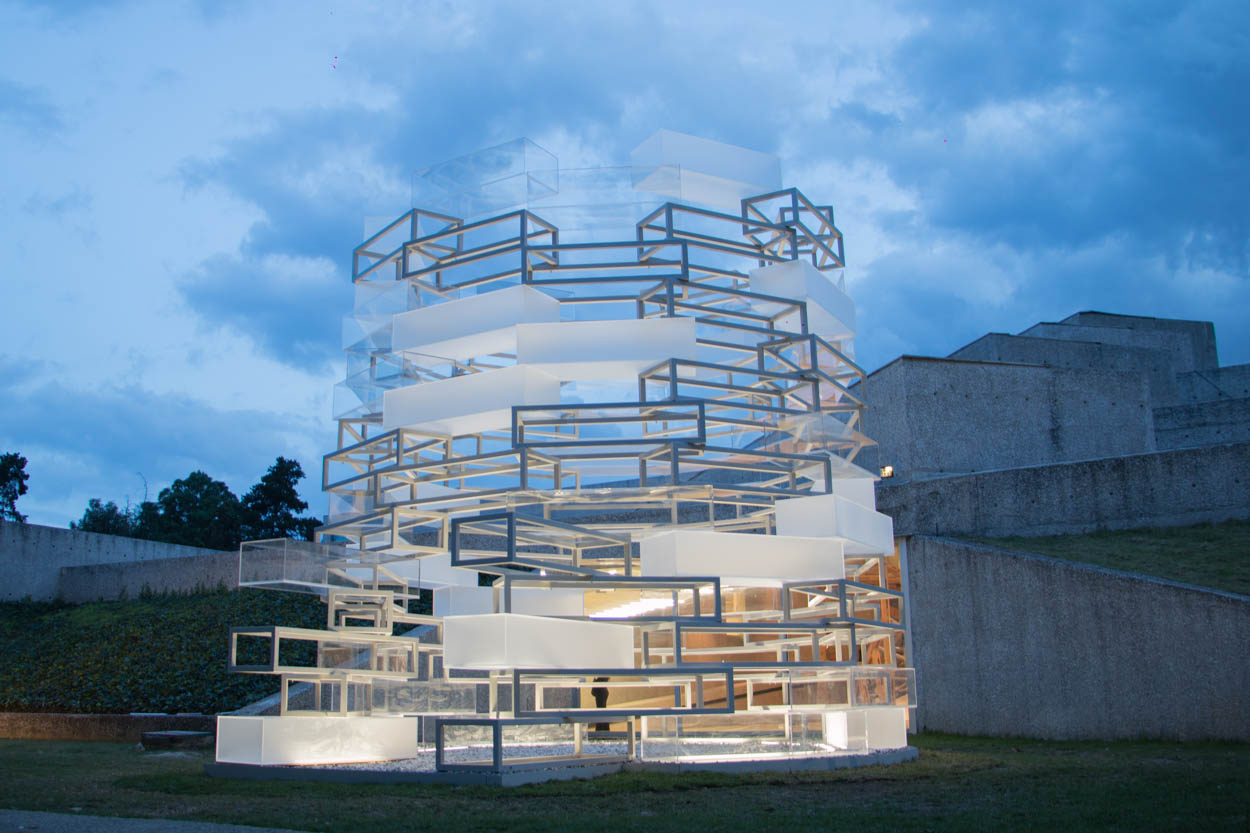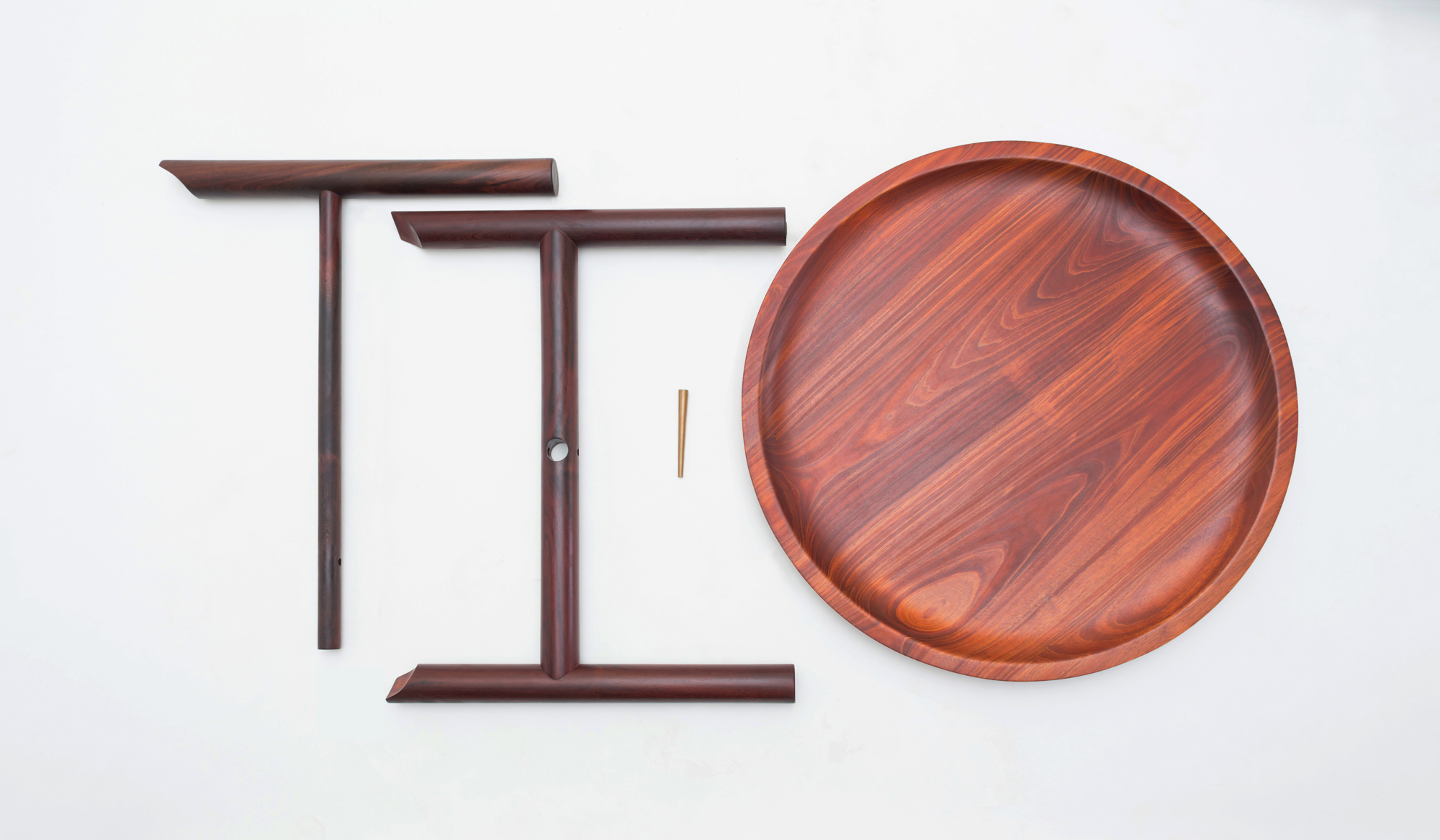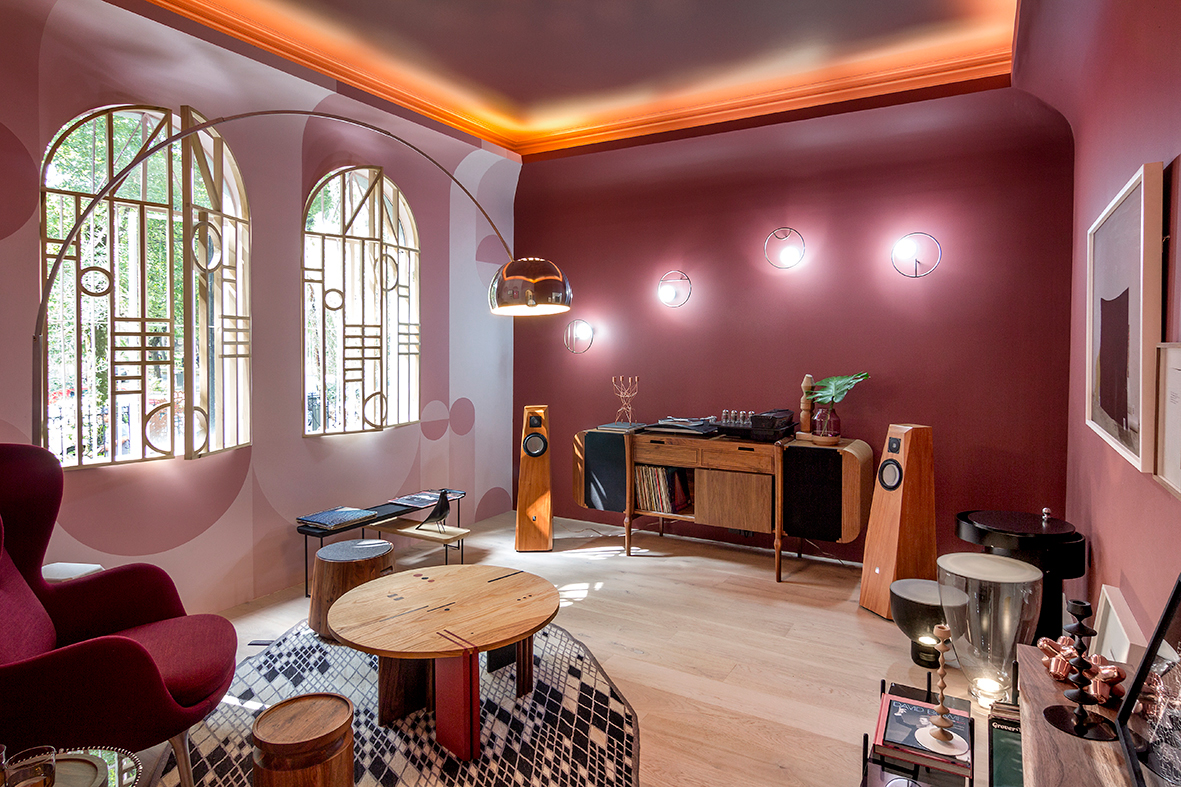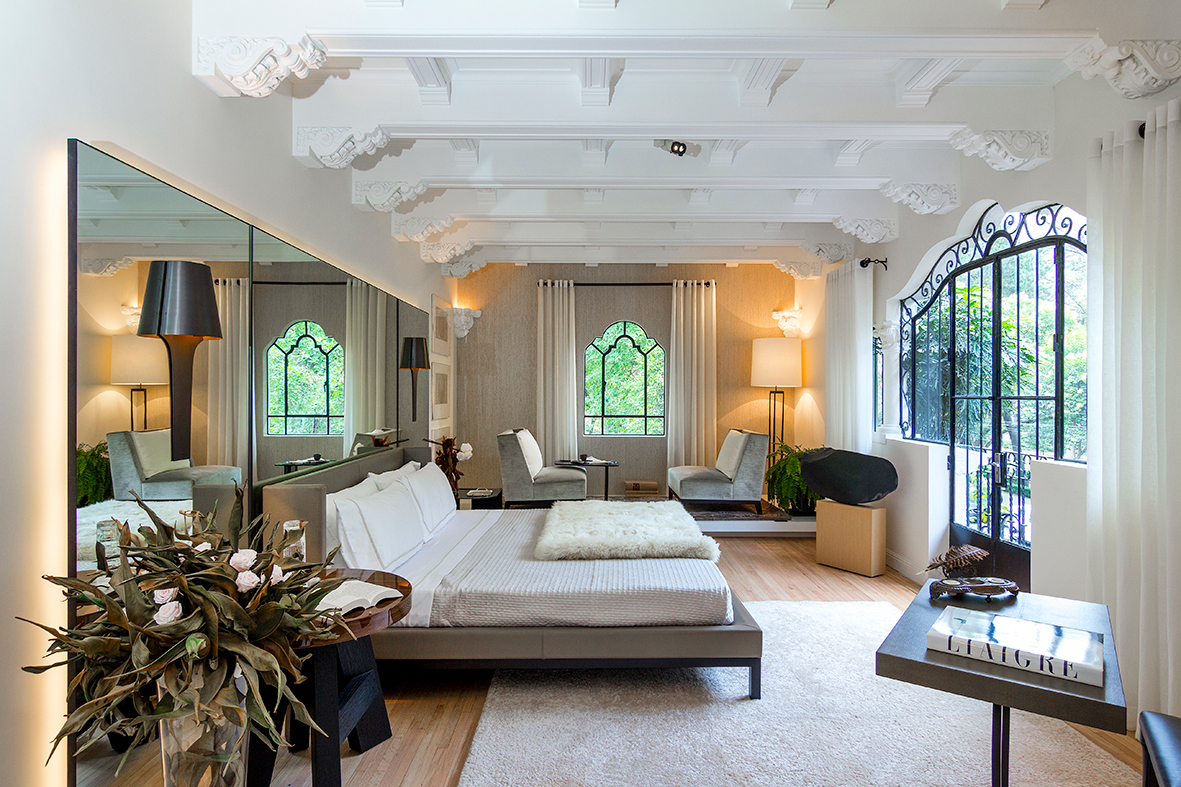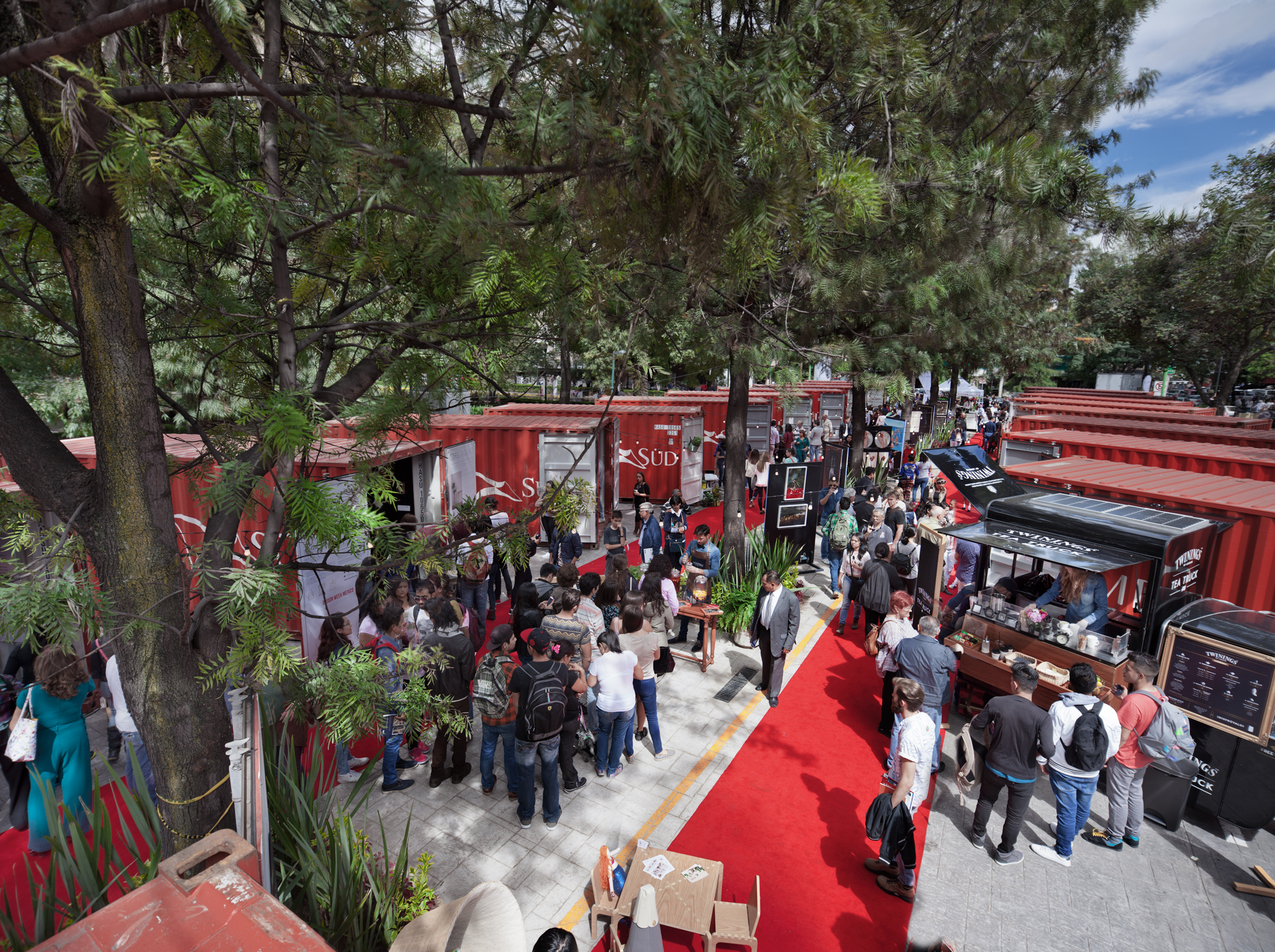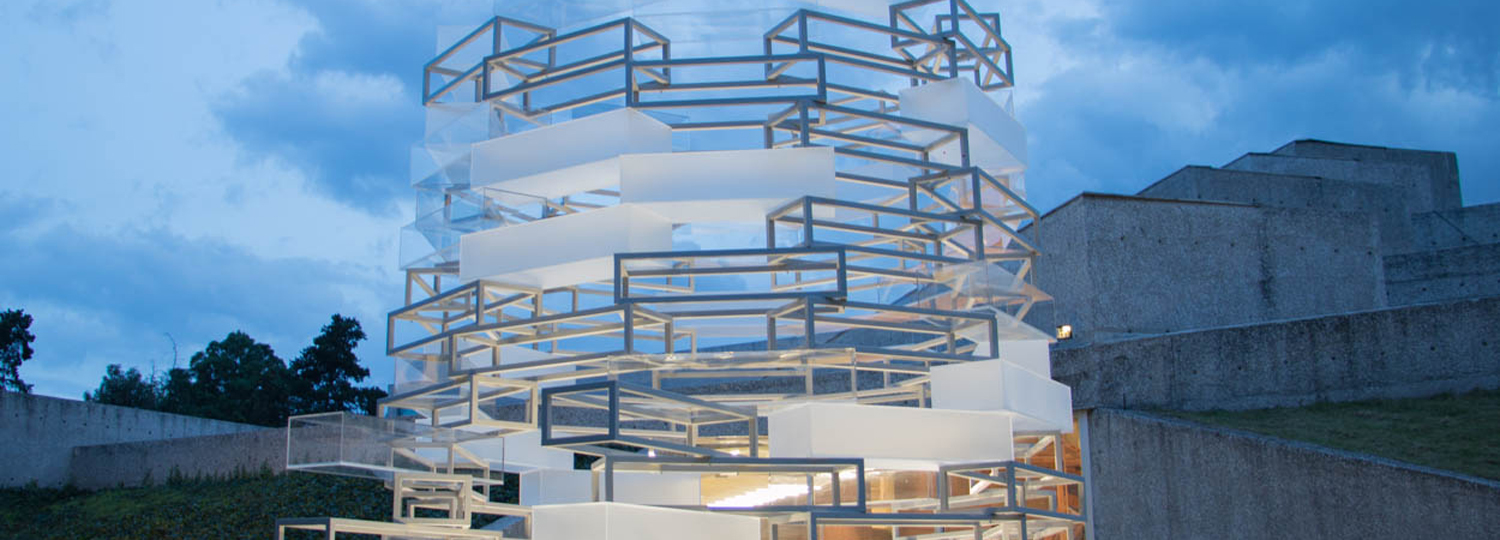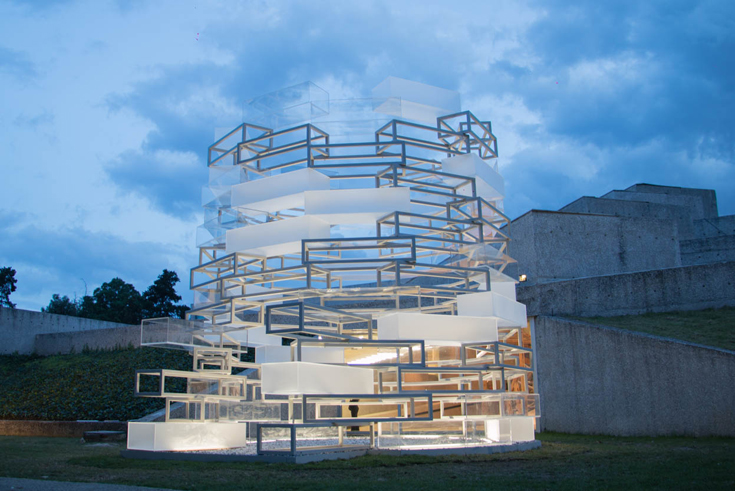Design Week Mexico 2016

Tamayo DWM Project 2016, Museum of Immortality by Nikolaus Hirsch Michel Müller, Foto: Alberto Jurtega
The 8th edition of Design Week Mexico, the country’s leading platform for design and architecture, closed on Sunday October 9th, with an ambitious program of exhibitions, residencies, talks, architectural structures and trade fairs across the city. Hosting Germany as guest country – coinciding with the Germany-Mexico Dual Year 2016-2017 - and Jalisco as guest region, Design Week Mexico 2016 launched a series of exhibitions and installations that will remain on show in the next three weeks to six months.
Conveying more than 170 design studios from across the country and over 500 participants, from designers, craftsmen, architects, artists, academics, curators and gallerists, Design Week Mexico has presented over 100 events and activities in the capital. From October 5-9, Design Week Mexico drew over 16,000 visitors across its key venues, reinforcing its role as one of the most influential Design Weeks in the world, boosting the local economy and enabling a meaningful dialogue between design practitioners and the general public.
The prize for Best Design in the context of Inédito, a group exhibition of emerging Mexican designers, was awarded to ITZ Mayan Wood Furniture, who received $100,000MXN ($5,200USD) for their ‘Ocum’ tables. The studio based in Bacalar in the Mexican state of Quintana Roo was founded by Luis López and Ania Wolowska, who specialise in producing high-quality furniture from many different native species of tropical hardwood, combining modern design with a commitment to environmental sustainability. The studio works with certified wood from local communities that have accredited reforestation programs, making a positive contribution to the development of the region while promoting ancient woodworking skills.
The Jury for the prize comprised of Jennifer Dunlop Fletcher (Curator of Design and Architecture at SFMOMA, USA); Thorsten Englert (Architect); Juan Gaitán (Director of Museo Tamayo) Odile Hainaut (Co-Founder, Wanted Design NY, USA); Cecilia León De La Barra (Designer); Emmanuel Plat (Director of Merchandising, MOMA NY, USA); Dan Rubinstein (Design & Home Editor at Departures Magazine, USA); John Zeppetelli (Director and Chief Curator, MACM, Canada).
The fundraising show Design House, which sees a group of designers and architects intervene on a disused neocolonial-style house at the heart of the upscale district of Polanco, will remain open until October 23rd. The space has been transformed into a site-specific installation, displaying the latest creations and collections of over 24 studios including Uribe Krayer, Studio Roca, Sofia Aspe, Rhizome and C Cúbica.
The exhibition Vision & Tradition, which features objects produced by young German and Mexican designers in collaboration with traditional craftsmen during a residency program in Jalisco, will remain accessible to the public until October 16th at Museo Tamayo. Participants include German designers Nils Wagner, Elisa Strozyk, Moritz Putzier; designers from Jalisco Agustín Elizalde, Sara Pereyra, Claudina Flores, Laura Noriega; Craftsmen from Jalisco Eduviges Martínez, Pablo Pajarito and Familia Bernabé, amongst many others.
Tamayo DWM Project, a major architectural pavilion designed by acclaimed German studio Nikolaus Hirsch/Michel Müller in the gardens of Museo Tamayo, will be up until March 2016. The project, which is entitled Museum of Immortality II, is based on an unrealised exhibition concept developed by German-Russian philosopher Boris Groys, originally presented as an experimental exhibition in Beirut, curated by artist Anton Vidokle. Similarly to the Serpentine Pavilion in London, the temporary structure becomes a central element of the contemporary art museum and its surrounding park, Bosque de Chapultepec, until the Spring.
Also on view until February 2017 are two exceptional exhibitions at Museo de Arte Moderno: one of the Mexican-American modernist designer Don Shoemaker, as well as a show by the late Japanese-Argentinian visual artist Kazuya Sakai, who is credited as one of the pioneers in geometric abstraction in Mexico. As the city prepares for World Design Capital 2018, this edition of Design Week Mexico demonstrated the outstanding cultural offer of the Mexican capital, showcasing the latest trends in international design, spatial practices and beyond. The appointment, awarded biennially to cities based on their commitment to use design as an effective tool for economic, social, and cultural development, makes Mexico City the first city in the Americas to hold the designation.
ITZ Mayan Wood Furniture said:
“To win the Design Week Mexico 2016 Inédito Prize means a lot to us - it is an recognition for our work and our efforts over the past five years. It also motivates us to continue improving and evolve our work. We are confident that the prize will help us further circulate our work and to improve our studio and production techniques. This is the third year that we take part in Design Week Mexico, which has enabled us to gain further visibility, raise the profile of our brand, and connect with professionals as well as clients. It has also brought us a lot of new friends!”
Emilio Cabrero, General Director of Design Week Mexico, said:
“For this 8th edition of Design Week Mexico, in collaboration with the German Embassy and the Goethe-Institut, we are incredibly proud to have drawn such record audience attendance, bringing design and architecture at the forefront of public attention while promoting emerging practices. Design Week Mexico enables to strengthen a network of practitioners nationally and internationally, while offering a high-quality program of activities for those interested to explore the role of design in culture and society. This edition of Design Week was a great opportunity to discover the latest international trends and debates in Design ahead of World Design Capital 2018, which we are eagerly awaiting and preparing for.”
Viktor Elbing, German Ambassador to Mexico, said:
“Design brings art and technique together. It is studied at universities, developed in the commercial sector and exhibited at museums as well as galleries. The ambition to link creativity and sustainability is very topical. In recent decades, both in Mexico and Germany, a strong sense of awareness for the environment has increased, one which enhances relations between the two nations and surely will be reflected in the future. Here too, design plays a major role. Germany’s participation as Guest Country to Design Week Mexico 2016, in the context of the Germany-Mexico Dual Year, was therefore very important for us.”
Conveying more than 170 design studios from across the country and over 500 participants, from designers, craftsmen, architects, artists, academics, curators and gallerists, Design Week Mexico has presented over 100 events and activities in the capital. From October 5-9, Design Week Mexico drew over 16,000 visitors across its key venues, reinforcing its role as one of the most influential Design Weeks in the world, boosting the local economy and enabling a meaningful dialogue between design practitioners and the general public.
The prize for Best Design in the context of Inédito, a group exhibition of emerging Mexican designers, was awarded to ITZ Mayan Wood Furniture, who received $100,000MXN ($5,200USD) for their ‘Ocum’ tables. The studio based in Bacalar in the Mexican state of Quintana Roo was founded by Luis López and Ania Wolowska, who specialise in producing high-quality furniture from many different native species of tropical hardwood, combining modern design with a commitment to environmental sustainability. The studio works with certified wood from local communities that have accredited reforestation programs, making a positive contribution to the development of the region while promoting ancient woodworking skills.
The Jury for the prize comprised of Jennifer Dunlop Fletcher (Curator of Design and Architecture at SFMOMA, USA); Thorsten Englert (Architect); Juan Gaitán (Director of Museo Tamayo) Odile Hainaut (Co-Founder, Wanted Design NY, USA); Cecilia León De La Barra (Designer); Emmanuel Plat (Director of Merchandising, MOMA NY, USA); Dan Rubinstein (Design & Home Editor at Departures Magazine, USA); John Zeppetelli (Director and Chief Curator, MACM, Canada).
The fundraising show Design House, which sees a group of designers and architects intervene on a disused neocolonial-style house at the heart of the upscale district of Polanco, will remain open until October 23rd. The space has been transformed into a site-specific installation, displaying the latest creations and collections of over 24 studios including Uribe Krayer, Studio Roca, Sofia Aspe, Rhizome and C Cúbica.
The exhibition Vision & Tradition, which features objects produced by young German and Mexican designers in collaboration with traditional craftsmen during a residency program in Jalisco, will remain accessible to the public until October 16th at Museo Tamayo. Participants include German designers Nils Wagner, Elisa Strozyk, Moritz Putzier; designers from Jalisco Agustín Elizalde, Sara Pereyra, Claudina Flores, Laura Noriega; Craftsmen from Jalisco Eduviges Martínez, Pablo Pajarito and Familia Bernabé, amongst many others.
Tamayo DWM Project, a major architectural pavilion designed by acclaimed German studio Nikolaus Hirsch/Michel Müller in the gardens of Museo Tamayo, will be up until March 2016. The project, which is entitled Museum of Immortality II, is based on an unrealised exhibition concept developed by German-Russian philosopher Boris Groys, originally presented as an experimental exhibition in Beirut, curated by artist Anton Vidokle. Similarly to the Serpentine Pavilion in London, the temporary structure becomes a central element of the contemporary art museum and its surrounding park, Bosque de Chapultepec, until the Spring.
Also on view until February 2017 are two exceptional exhibitions at Museo de Arte Moderno: one of the Mexican-American modernist designer Don Shoemaker, as well as a show by the late Japanese-Argentinian visual artist Kazuya Sakai, who is credited as one of the pioneers in geometric abstraction in Mexico. As the city prepares for World Design Capital 2018, this edition of Design Week Mexico demonstrated the outstanding cultural offer of the Mexican capital, showcasing the latest trends in international design, spatial practices and beyond. The appointment, awarded biennially to cities based on their commitment to use design as an effective tool for economic, social, and cultural development, makes Mexico City the first city in the Americas to hold the designation.
ITZ Mayan Wood Furniture said:
“To win the Design Week Mexico 2016 Inédito Prize means a lot to us - it is an recognition for our work and our efforts over the past five years. It also motivates us to continue improving and evolve our work. We are confident that the prize will help us further circulate our work and to improve our studio and production techniques. This is the third year that we take part in Design Week Mexico, which has enabled us to gain further visibility, raise the profile of our brand, and connect with professionals as well as clients. It has also brought us a lot of new friends!”
Emilio Cabrero, General Director of Design Week Mexico, said:
“For this 8th edition of Design Week Mexico, in collaboration with the German Embassy and the Goethe-Institut, we are incredibly proud to have drawn such record audience attendance, bringing design and architecture at the forefront of public attention while promoting emerging practices. Design Week Mexico enables to strengthen a network of practitioners nationally and internationally, while offering a high-quality program of activities for those interested to explore the role of design in culture and society. This edition of Design Week was a great opportunity to discover the latest international trends and debates in Design ahead of World Design Capital 2018, which we are eagerly awaiting and preparing for.”
Viktor Elbing, German Ambassador to Mexico, said:
“Design brings art and technique together. It is studied at universities, developed in the commercial sector and exhibited at museums as well as galleries. The ambition to link creativity and sustainability is very topical. In recent decades, both in Mexico and Germany, a strong sense of awareness for the environment has increased, one which enhances relations between the two nations and surely will be reflected in the future. Here too, design plays a major role. Germany’s participation as Guest Country to Design Week Mexico 2016, in the context of the Germany-Mexico Dual Year, was therefore very important for us.”
